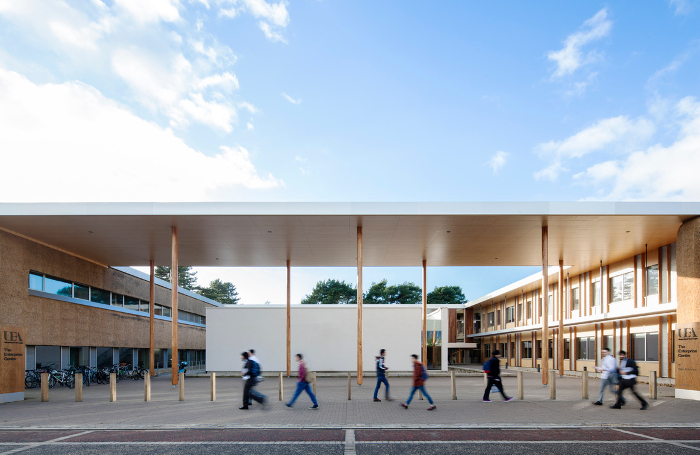The RIBA’s Plan for Use guide was published last week. It is an essential companion to the Plan of Work 2020 for any architect seeking to close the performance gap between what is designed and what is built.
Lead author Mike Chater has described the Plan for Use as similar to BSRIA’s Soft Landings Framework. It shares the same objective of safeguarding and improving performance targets, only it is aimed at designers rather than building services engineers.
Used correctly, the Plan for Use can preserve the "golden thread" of quality called for by the Hackitt report, from design into operational reality.
The Plan for Use has three main components
- Setting realistic and measurable targets
This helps architects define performance outcomes or targets as part of the project brief, including measurable values for energy use and embodied and operational carbon. - Activities to ensure that design and construction are capable of meeting the agreed targets
These will identify and manage any risks to predicted outcomes that could arise as the project progresses. - Measurement and feedback
This embeds into the project a commitment to measuring and evaluating the building in use: to assess how targets have been met; to fine-tune the building and services; and to learn lessons that will inform future projects.
How the Plan for Use plugs into the Plan of Work
In 2020, new provisions were introduced into the revised Plan of Work aimed at encouraging a more outcomes-based approach to design. The Plan for Use provides detailed guidance on how to adopt that approach.
While the Plan for Use points out the performance benefits of best practice in handover and Post-Occupancy Evaluation (POE), it does not only focus on later Stages.
Clear advice is given for each RIBA Stage while inspiring case studies prove that the approach can result in better buildings, contented clients and, often, a better profit margin.
The Plan for Use is also a valuable complement to the RIBA’s Sustainable Outcomes Guide. This sets out key achievable metrics and targets in response to the climate emergency: the Plan for Use can be used to help deliver these vital outcomes.
Cullinan Studio provided one of the featured case studies. Lara Michael, Partner, and Carol Costello, Practice Leader, explained how the National Automotive Innovation Centre (NAIC), a large project with multiple stakeholders, benefited from extensive consultation throughout the project.
“Bringing the multiple stakeholders together in consultation ultimately saved the project £30 million,” explains Michael.
The innovation centre’s clients included the Warwick Manufacturing Group (WMG), Jaguar Land Rover and Tata Motors UK. Stakeholder consultations broke down silos between stakeholders, an activity that reflects Cullinan’s practice-wide culture of knowledge sharing within and across projects.
A common requirement across clients led to the design option of shared space and a collaborative hub. Not only did this save the project a vast amount of money, but it minimised materials usage.

The Plan for Use and Post Occupancy Evaluation (POE)
POE is the final but crucial element of the Plan for Use. It provides for two stages: a light-touch POE undertaken towards the end of Stage 6, and more in-depth investigations during Stage 7 after fine-tuning and any defect correction.
The Plan for Use emphasises the value of collaboration between partners, and the RIBA’s ambition is that it will be taken up by industry in general: to help shift the focus from capital costs to outcomes, particularly regarding sustainability and occupier wellbeing.
Architects are being encouraged to offer the Stage 7 POE as an additional service, with a commensurate fee where appropriate, and it hopes that light-touch POE may become a standard part of the architect’s schedule of services.
POE need not be complicated. For the National Automotive Innovation Centre, Cullinan developed a simple bespoke POE using Survey Monkey, reveals Lara Michael.
“There is also a virtuous circle to POE,” points out her colleague Costello, “as previous POE findings fed into our design for NAIC in the first place; and we will keep learning from it in years to come.”
While much of Cullinan’s work is with long-term, sympathetic clients, other practices often report reluctance on the client’s part to carry out POE.
“The Plan for Use is succinct, engaging and we can show it to clients,” Costello enthuses. “Educating clients is a big part of our job. We need informed clients who will take the initiative and the Plan for Use could be a great resource to work with.”
Thanks to Lara Michael, Partner, and Carol Costello, Practice Leader, Cullinan Studio.
Text by Neal Morris. This is a Professional Feature edited by the RIBA Practice team. Send us your feedback and ideas.
RIBA Core Curriculum Topic: Business, clients and services.
As part of the flexible RIBA CPD programme, Professional Features count as microlearning. See further information on the updated RIBA CPD Core Curriculum and on fulfilling your CPD requirements as an RIBA Chartered Member.
Article first published on 1 April 2021.









